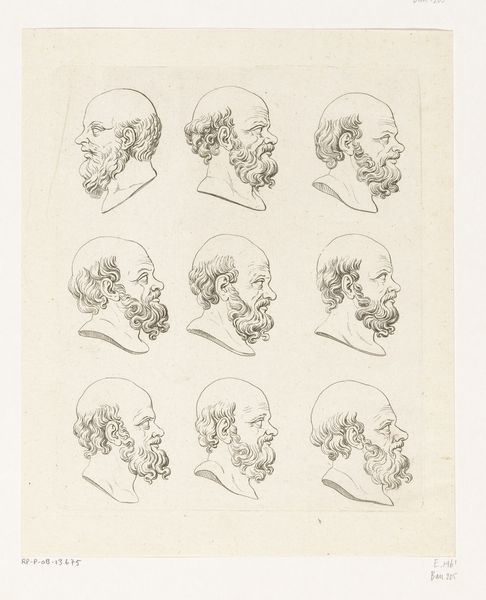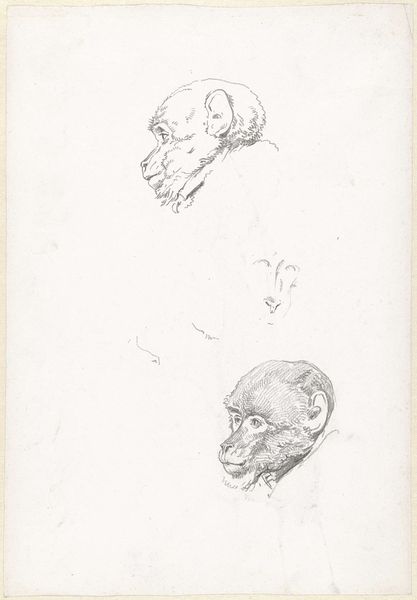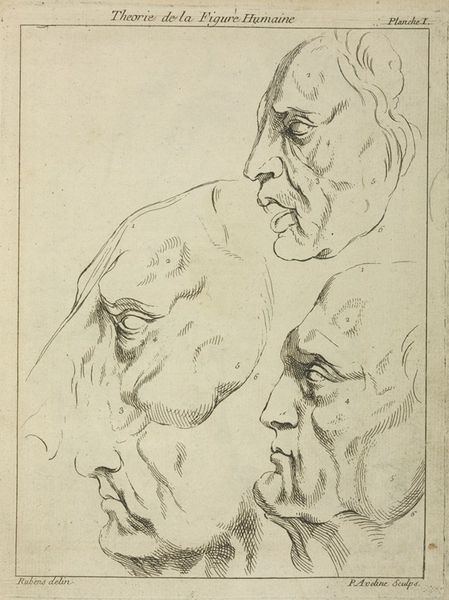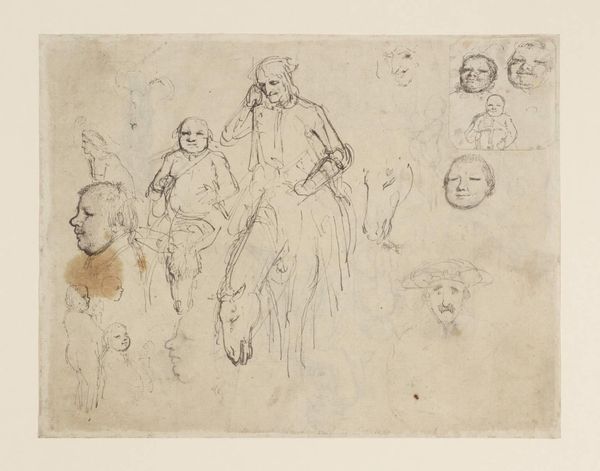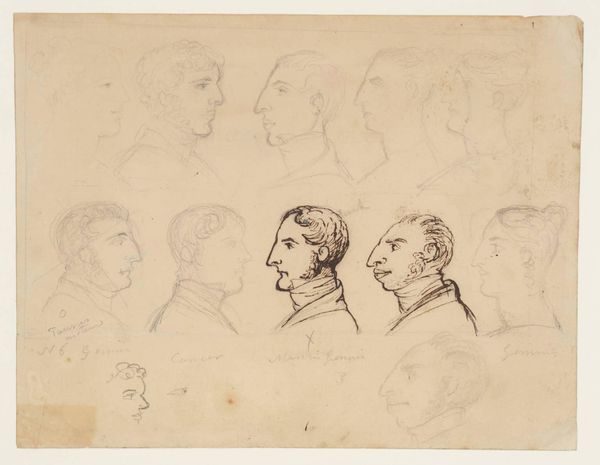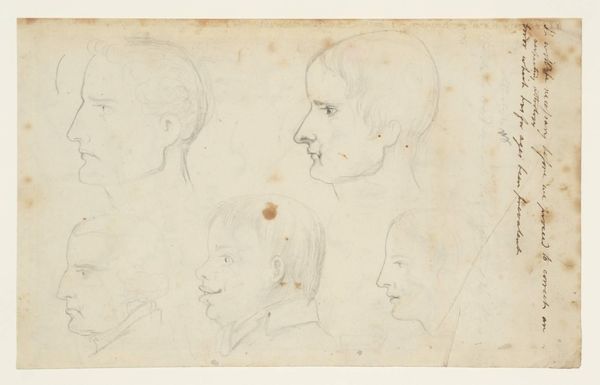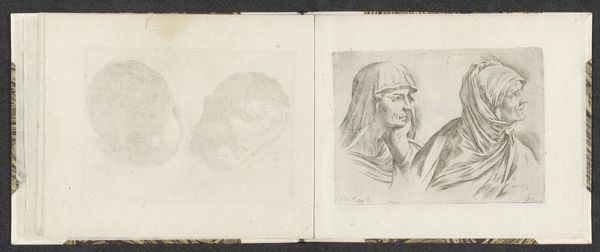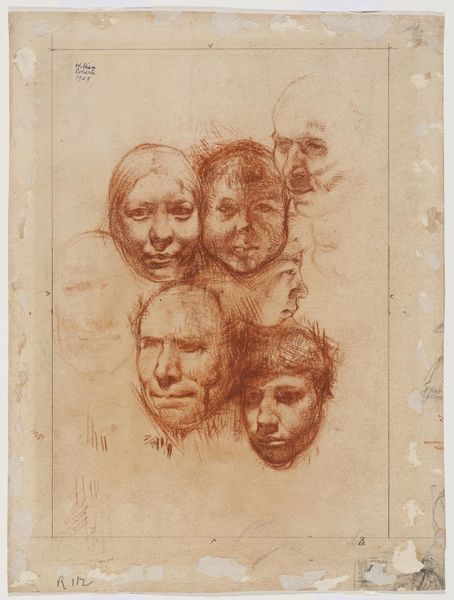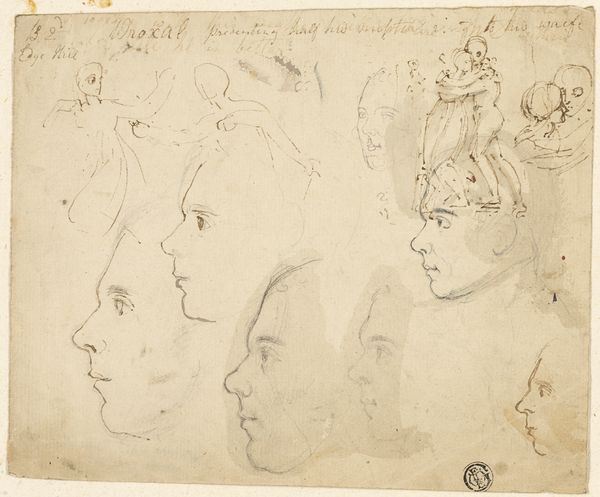
drawing, pencil
#
portrait
#
drawing
#
self-portrait
#
head
#
pencil drawing
#
pencil
#
portrait drawing
#
post-impressionism
Dimensions: 47 x 62 cm
Copyright: Public domain
Editor: So, this is John Peter Russell's "Five studies of Vincent van Gogh," created in 1888, using pencil on paper. It’s really interesting to see the artist working out the planes of Van Gogh’s face. What strikes you about it? Curator: The means of production here are key. Russell's pencil sketches reveal a material exploration, not just of form, but of his artistic relationship with Van Gogh. Consider the social context: these are not finished portraits for sale, but studies made among peers, indicative of the artistic labor of observation and interpretation, prior to and perhaps independent of any subsequent finished work. How do the physical limitations – or affordances – of pencil and paper shape the depiction? Editor: I guess the pencil allows for quick and immediate capture, a sense of the ephemeral. Are you saying that it gives insights into the relationship of these two artists as labourers and consumers within a system? Curator: Precisely! And look closely at the varying pressure of the pencil, the erasures, the ghost-like underdrawings. Russell is thinking through material and artistic conventions but is in no way limited by these in his pursuit of depicting the social context surrounding him, literally and figuratively, by drawing out his immediate surrounding: his peer, Van Gogh. It begs the question: What's being made, and who benefits from the production? Editor: So, it's less about Van Gogh as the subject, and more about Russell's process and the artistic environment they shared? It's a work about labour! Curator: Indeed! Consider the art market: These were likely not intended for public consumption in their current form. They document labour and interaction more than intending to perform art. Editor: This has totally changed how I see it! It is as much about process and materiality as it is about portraiture, offering valuable insight. Curator: Precisely! The very 'thingness' of art, the physicality and social context of production matter. We tend to get so hung up on ‘who’ and ‘what’ that we often ignore 'how'.
Comments
No comments
Be the first to comment and join the conversation on the ultimate creative platform.
